Nothing breaks a fish keeper’s heart faster than watching their beautiful betta become sick. I’ll never forget the morning I found my first betta acting strangely. He wasn’t swimming normally and refused his favorite food. I felt helpless because I didn’t know what was wrong. After ten years of keeping bettas, I’ve dealt with nearly every betta fish disease imaginable. This comprehensive guide will help you identify what’s wrong with your fish and take action quickly. Early detection saves lives.
| Quick Reference | Details |
| Most Common Disease | Fin rot (bacterial infection) |
| Most Serious Disease | Dropsy (organ failure symptom) |
| Most Contagious | Ich and Velvet (parasites) |
| Most Preventable | 90%+ of all diseases |
| Warning Signs | Behavior changes appear before physical symptoms |
| Golden Rule | Quarantine new fish, maintain water quality, reduce stress |
Understanding betta health problems starts with observation. Sick betta fish behavior changes before you see physical symptoms. Catching problems early dramatically improves treatment success rates.
⚠️ Medical Disclaimer: This article provides general information based on personal experience and research. It is not a substitute for professional veterinary advice, diagnosis, or treatment. Always consult with a qualified aquatic veterinarian for serious health concerns or if symptoms persist after home treatment. If your betta shows severe symptoms, stops eating for more than 3 days, or rapidly deteriorates, seek professional veterinary care immediately.
What Makes Bettas Sick?
After treating hundreds of sick betta fish over the years, I’ve learned that most betta fish illness stems from three root causes. Understanding these helps prevent most health problems before they start.
Poor water quality causes 70% of all betta diseases. High ammonia, nitrites, or nitrates weaken your betta’s immune system. The protective slime coat breaks down. Bacteria and parasites attack easily. I learned this lesson when I skipped water changes and my entire tank got sick.
Stress is the second major factor. Stressed fish have suppressed immune systems. Any stressor – aggressive tank mates, improper temperature, loud noises, or frequent changes – makes disease more likely. A stressed betta cannot fight off infections effectively.
Introducing new fish without quarantine brings diseases into healthy tanks. This single mistake causes most disease outbreaks in home aquariums. New fish carry parasites and bacteria even when they look perfectly healthy.
The good news? Most common betta diseases are preventable and treatable. Quick action and proper care cure the majority of problems. Your betta can make full recoveries with the right approach.
Recognizing the First Warning Signs
Learning to spot signs of sick betta saved many of my fish. Behavior changes always appear before visible physical symptoms. I check my bettas during every feeding for unusual behavior patterns.
How to tell if betta is sick starts with knowing normal behavior first. Healthy bettas are active, curious, and responsive. They greet you during feeding time. They explore their tank regularly. Their fins spread fully. Colors appear vibrant and rich.
Watch for these behavioral red flags:
Lethargic betta fish that suddenly become inactive need immediate attention. One of my bettas went from energetic to lethargic overnight. Quick investigation revealed an ammonia spike. Catching it fast saved his life.
Betta not eating is an early warning sign I never ignore. Healthy bettas are food-motivated. Refusing meals for 2-3 days signals something is wrong. Start investigating water parameters and looking for physical symptoms immediately.
Betta losing color indicates stress or illness. Vibrant colors fade when bettas feel unwell. My betta Azure turned from brilliant blue to pale gray during a bacterial infection. His color returned completely after treatment.
Betta breathing heavy with rapid gill movement suggests gill problems, parasites, or poor water quality. Count gill movements – more than 120 per minute is too fast. This requires immediate action to prevent suffocation.
Disease Diagnosis Guide
Identifying betta disease correctly ensures proper treatment. I use a systematic approach to diagnose problems quickly and accurately.
Step 1: Observe Behavior Carefully Note everything unusual. When did symptoms start? What changed recently in the tank? Write down observations. Details help identify the problem.
Step 2: Test Water Immediately Use a liquid test kit to check ammonia, nitrite, nitrate, and pH. Poor water parameters cause or worsen most diseases. Fix water quality first before trying other treatments.
Step 3: Examine Physical Symptoms Look closely at your betta under good lighting. Check fins, body, gills, eyes, and scales. Use a flashlight to see details. Compare to healthy betta pictures online.
Step 4: Consider Recent Changes Did you add new fish, plants, or decorations? Change food brands? Adjust temperature? Recent changes often trigger disease outbreaks.
Step 5: Match Symptoms to Disease Use the comprehensive disease table below and detailed descriptions to identify the specific problem. Multiple symptoms help narrow diagnosis.
Quick Reference Disease Chart
This betta disease chart helps you quickly identify what’s wrong. Match your betta’s symptoms to find the likely cause and treatment approach.
| Disease | Symptom(s) | Cause(s) | Treatment(s) |
| Fin Rot | Ragged, disintegrating fins with black/red edges | Bacterial infection from poor water quality | Water changes, antibiotics, temperature increase |
| Ich (White Spot) | White salt-grain spots on body/fins, scratching | Parasitic infection, stress, temperature fluctuation | Medication (malachite green), heat to 86°F, salt |
| Velvet | Gold/rust dust appearance, scratching, lethargy | Parasitic infection (Oodinium), stress | Copper-based medication, darkness, heat treatment |
| Dropsy | Pinecone scales, swollen belly, lethargy | Bacterial infection causing organ failure | Antibiotics (Kanaplex), Epsom salt baths, often fatal |
| Swim Bladder Disease | Swimming upside down, sideways, or sinking | Overfeeding, constipation, infection, injury | Fasting, peas/daphnia, Epsom salt, temperature increase |
| Columnaris | White/gray cotton-like growth on mouth/body | Bacterial infection (Flavobacterium columnare) | Antibiotics, salt, clean water, isolation |
| Popeye | One or both eyes bulging outward | Bacterial infection, injury, poor water quality | Antibiotics, Epsom salt baths, water changes |
| Septicemia | Red streaks in fins/body, lethargy | Bacterial blood infection, severe stress | Strong antibiotics (Kanaplex), supportive care |
| Hole in the Head | Pitted holes/lesions on head and body | Parasite (Hexamita), poor nutrition, stress | Metronidazole medication, improved diet, clean water |
| Anchor Worms | Visible worms protruding from body | Parasitic crustacean (Lernaea) | Manual removal, antiparasitic medication, salt |
| Constipation/Bloat | Swollen belly, inactivity, loss of appetite | Overfeeding, low-fiber diet | Fasting, daphnia/peas, Epsom salt bath |
| Ammonia Poisoning | Red/bloody gills, gasping, erratic behavior | Toxic ammonia in water from waste buildup | Immediate water changes, Prime, establish cycle |
| Tumors | Visible lumps or masses on body | Genetic factors, age, poor breeding | Usually untreatable, monitor quality of life |
This chart provides quick answers for identifying betta fish diseases. Read the detailed descriptions below for complete information on each condition.
Bacterial, Parasitic, and Fungal Infections
Betta diseases fall into several categories based on their cause. Understanding whether your betta has a bacterial infection, parasite, or fungal problem determines the correct treatment approach.
Bacterial infections are most common and usually result from poor water quality. These include fin rot, columnaris, popeye, and septicemia. Antibiotics treat bacterial problems effectively when caught early.
Parasitic diseases include ich, velvet, anchor worms, and hole in the head. Parasites require antiparasitic medications. Regular antibiotics don’t work on parasites. Proper identification prevents wasting time on wrong treatments.
Fungal infections are less common in bettas than bacteria or parasites. True fungus appears white and cottony. It usually develops on existing wounds or damaged tissue. Antifungal medications treat these specifically.
Environmental problems like ammonia poisoning or constipation aren’t infections. These require fixing water conditions or adjusting feeding rather than medication. Treating these with antibiotics wastes time and money.
Detailed Disease Descriptions
Each disease has characteristic symptoms that help with identification. Learning these details helped me diagnose problems quickly and accurately over the years.
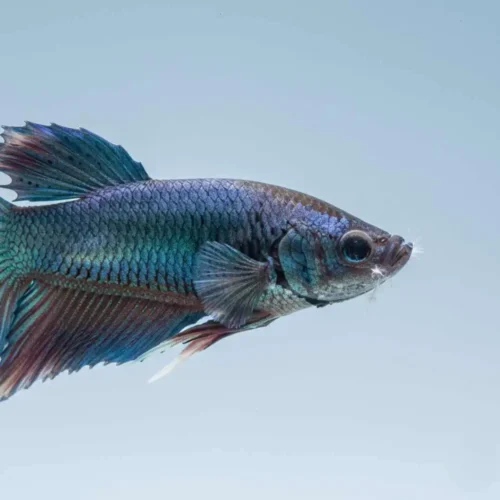
Understanding This Bacterial Infection
Despite the name “mouth fungus,” columnaris is actually a bacterial infection caused by Flavobacterium columnare. This aggressive bacteria spreads quickly and requires immediate treatment.
The signature symptom is white or grayish patches that look like cotton wool. These commonly appear around the mouth, fins, or gills. The patches may have a fuzzy appearance similar to fungus. As infection progresses, tissue underneath becomes red and inflamed.
I had a betta develop columnaris after a water quality crash. The white growth around his mouth appeared overnight. Within two days, it spread to his gills. Quick antibiotic treatment saved him but recovery took weeks.
Columnaris thrives in warmer water and spreads through contact. Stressed fish are most vulnerable. Poor water quality and injuries provide entry points for bacteria.
Treatment requires strong antibiotics like Kanaplex or Furan-2. Add aquarium salt at 1 tablespoon per 5 gallons. Perform daily water changes. Isolate sick fish immediately to prevent spread.
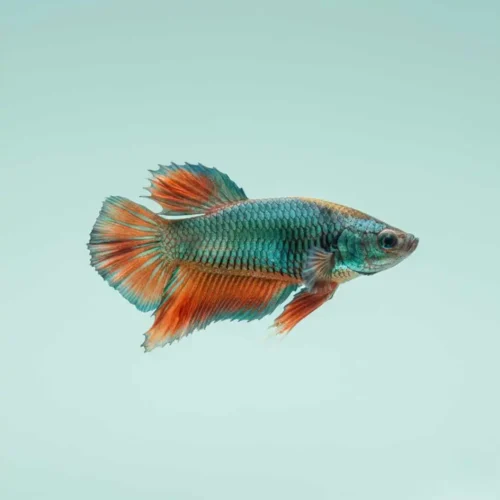
A Serious Internal Condition
Dropsy is not a disease itself but a symptom of internal organ failure. The characteristic pinecone appearance happens when fluid builds up inside your betta’s body cavity. Scales stick out perpendicular to the body.
Other symptoms include severe abdominal swelling, lethargy, loss of appetite, and bulging eyes. The belly becomes extremely bloated and round. Your betta may rest at the bottom or struggle to swim.
Bacterial infections affecting the kidneys usually cause dropsy. Poor water quality and stress weaken organs over time. By the time pineconing appears, internal damage is severe.
Treatment involves antibiotics like Kanaplex combined with Epsom salt baths. Unfortunately, the survival rate is only 20-30% even with aggressive treatment. Many cases prove fatal because organs are too damaged.
I’ve saved a few bettas from early-stage dropsy caught before full pineconing developed. But most cases I’ve encountered ended sadly despite my best efforts. Prevention through excellent water quality is crucial.
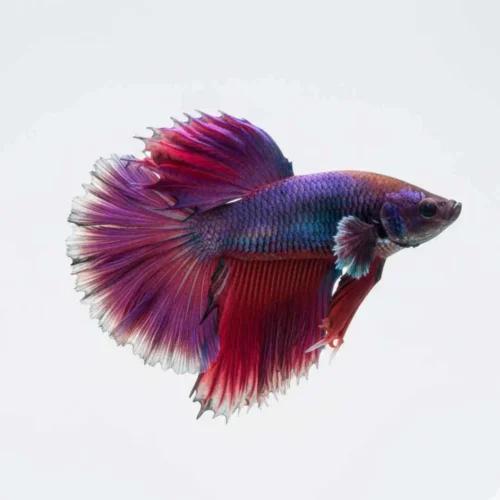
The Most Common Betta Disease
Fin rot is a bacterial infection that destroys fin tissue. I’ve treated more cases of fin rot than any other disease. The good news is that it’s highly treatable when caught early.
Early symptoms include discoloration at fin edges – black, white, or red coloring. Fins begin receding and developing ragged, uneven edges. As infection progresses, fins literally dissolve away.
Poor water quality causes most fin rot cases. High ammonia or nitrites burn delicate fin tissue. Bacteria enter through these damaged areas and begin destroying tissue.
Treatment starts with improving water quality immediately. Increase water changes to every other day. Add aquarium salt. For moderate to severe cases, use antibiotics like API Fin & Body Cure or Kanaplex.
Fins grow back beautifully after successful treatment. I’ve seen bettas with half their tail missing regrow completely within 6-8 weeks. Patience and clean water are key.
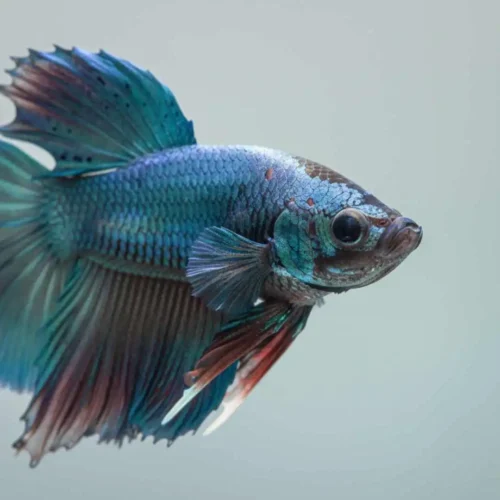
A Parasitic Disease
Hole in the head disease creates pitted holes or lesions on your betta’s head and body. The parasite Hexamita causes these distinctive symptoms. Poor nutrition and chronic stress make bettas vulnerable.
Small holes appear first, usually on the head near the eyes or lateral line. These holes may ooze fluid. As disease progresses, holes enlarge and deepen. Affected areas may become infected secondarily.
Betta fish symptoms include lethargy, loss of appetite, color fading, and visible head lesions. The holes are unmistakable once they develop. Early detection helps prevent permanent scarring.
Treatment requires metronidazole (Metroplex) or similar antiparasitic medication. Improve diet with high-quality varied foods. Address all sources of stress. Maintain perfect water quality during recovery.
I successfully treated a betta with early-stage hole in the head. The small holes healed completely with medication and better nutrition. But severe cases leave permanent scars.
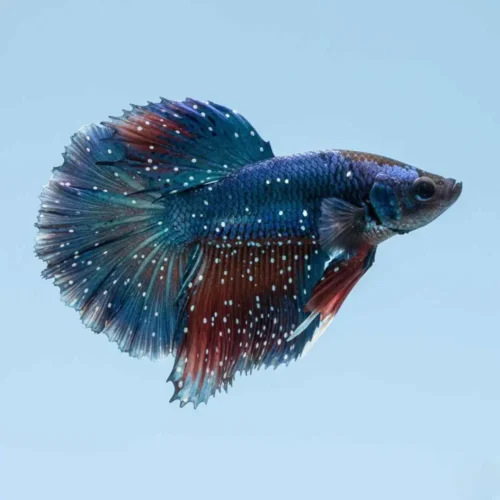
White Spot Disease
Ich is caused by the parasite Ichthyophthirius multifiliis. This common disease affects most aquariums eventually. The signature symptom is white spots that look like salt grains scattered across the body and fins.
Other symptoms include scratching on decorations, clamped fins, rapid breathing, and lethargy. Your betta may flash – rubbing its body against objects repeatedly trying to dislodge parasites.
New fish introduction without quarantine causes most ich outbreaks. Temperature fluctuations and stress also trigger infections. The parasite multiplies rapidly in the right conditions.
Treatment involves raising temperature to 86°F, adding medication like API Super Ick Cure, and maintaining excellent water quality. Treatment must continue for 10-14 days to eliminate all parasite life stages.
I’ve treated dozens of ich cases with near 100% success rates. Early intervention makes treatment easy. Delayed treatment allows parasites to overwhelm your betta.
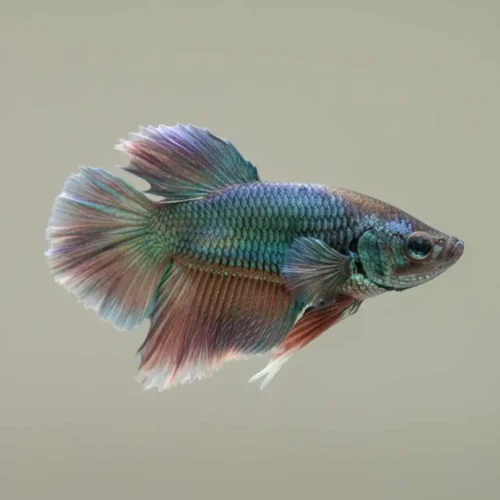
Swollen Eye Condition
Popeye causes one or both eyes to bulge outward from the head. The eye appears swollen and may protrude significantly. This condition results from fluid buildup behind the eye.
Bacterial infection is the most common cause. Poor water quality allows bacteria to infect eye tissue. Physical injury can also cause localized swelling. If only one eye is affected, injury is likely. Both eyes suggest infection or water quality issues.
Treatment involves antibiotics, Epsom salt baths, and clean water. Add 1 teaspoon Epsom salt per gallon to draw out excess fluid. Use antibiotics like Kanaplex if bacterial infection is suspected.
Most popeye cases resolve within 1-2 weeks with treatment. The eye returns to normal size gradually. Permanent damage is rare if treated promptly.
One of my bettas developed popeye after bumping into a decoration. The swelling looked alarming but resolved completely with Epsom salt baths alone.
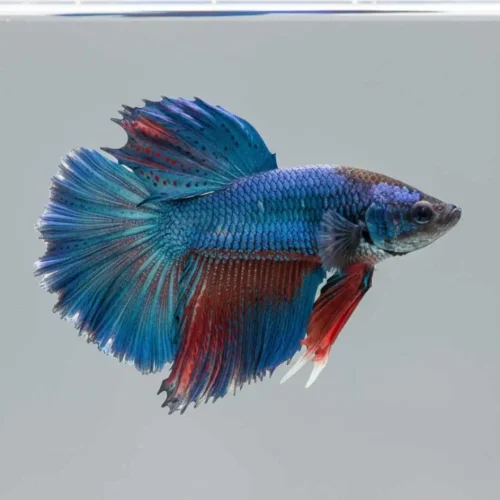
Hemorrhagic Blood Infection
Septicemia is a severe bacterial blood infection. Red streaks appear in fins and body as blood vessels become infected. This serious condition requires immediate aggressive treatment.
Symptoms include red streaking through fins, lethargy, loss of appetite, rapid breathing, and general weakness. Your betta may appear very ill and unresponsive. Colors fade dramatically.
Severe stress, injury, or advanced bacterial infections cause septicemia. The bacteria enter the bloodstream and spread systemically. This is life-threatening without treatment.
Treat with strong broad-spectrum antibiotics immediately. Kanaplex or Maracyn 2 work well. Maintain perfect water conditions. Keep the tank quiet and dark to reduce stress.
Survival depends on how quickly treatment begins. Early cases respond well. Advanced septicemia with organ damage often proves fatal despite treatment.
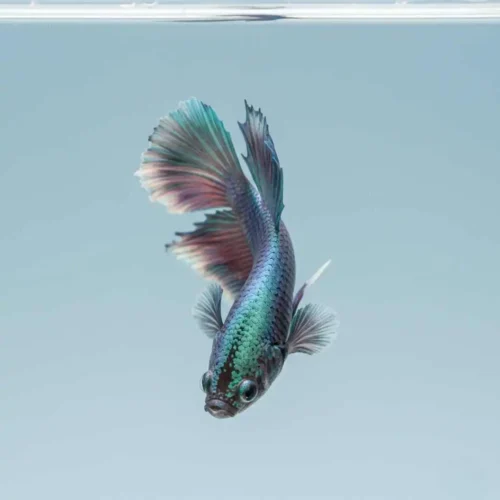
Loss of Buoyancy Control
Swim bladder disease causes bettas to swim abnormally – upside down, sideways, or vertically. Some sink to the bottom helplessly. Others float at the surface unable to swim down.
Overfeeding and constipation cause 70% of cases. The swollen digestive tract presses on the swim bladder. Other causes include bacterial infection, injury, or birth defects.
Symptoms include abnormal swimming position, struggling to maintain balance, inability to control depth, and distress from fighting buoyancy.
Treatment starts with fasting for 2-3 days. Then feed daphnia or a tiny piece of cooked pea. Use Epsom salt baths. Raise temperature to 80°F. Most cases resolve within a week.
I’ve successfully treated numerous swim bladder cases. Constipation-related problems respond quickly to fasting and dietary changes. Infection-based cases need antibiotics additionally.
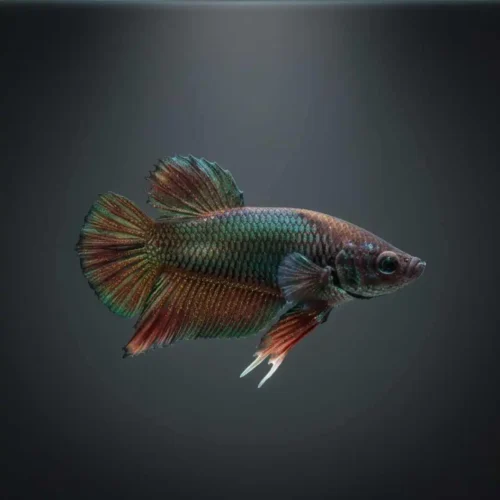
Golden Dust Disease
Velvet appears as a gold, rust, or brownish dust covering your betta. This parasitic infection by Oodinium spreads quickly and can kill within days if untreated.
Shine a flashlight on your betta in dim lighting. Velvet creates a metallic gold or bronze sheen. Your betta will scratch constantly on objects. Clamped fins, lethargy, and rapid breathing accompany the dust appearance.
Velvet is highly contagious and aggressive. It progresses much faster than ich. Stressed fish are most vulnerable. The parasite attacks gills as well as skin.
Treatment requires copper-based medications or antiparasitic treatments. Darken the tank completely – velvet parasites need light for photosynthesis. Raise temperature to 82°F. Treat for at least 10 days.
I lost a betta to velvet before I recognized what it was. The disease killed him in just four days. Now I treat any suspicious golden sheen immediately.
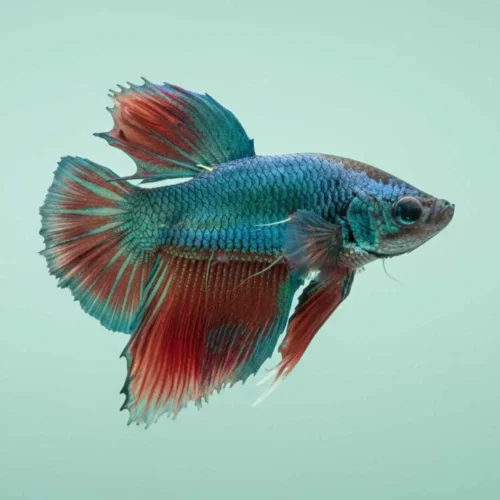
Visible Parasitic Crustaceans
Anchor worms are not actually worms but parasitic crustaceans. These visible parasites attach to your betta’s body with an anchor-shaped head embedded in tissue. The body extends outward looking like a small worm.
You’ll see the worm protruding from your betta’s skin. The attachment site becomes red and inflamed. Your betta may scratch at the spot. Secondary bacterial infections often develop at wound sites.
These parasites usually arrive with new fish or live food. They’re less common in bettas than other diseases but do occur occasionally.
Treatment involves physically removing the worm with tweezers. Grasp the parasite close to the skin and pull straight out. Apply antiseptic to the wound. Use antiparasitic medication to kill any remaining juveniles. Salt baths help prevent infection.
Digestive Problems
Constipation makes your betta’s belly swell noticeably. The fish becomes inactive and may struggle to swim normally. Loss of appetite often occurs. Your betta may rest at the bottom frequently.
Overfeeding causes most constipation. Dried foods that expand in water are particularly problematic. Low-fiber diets contribute. Some bettas are prone to digestive issues genetically.
Treatment requires fasting for 2-3 days. Then feed daphnia or a tiny piece of blanched pea. These act as natural laxatives. Raise water temperature to 80°F to boost metabolism.
Epsom salt baths at 1 teaspoon per gallon help reduce swelling. Do 10-15 minute baths daily until bloating resolves.
Prevention involves proper feeding amounts and varied diet. Feed only what your betta can eat in 2-3 minutes. Include frozen foods regularly.
Water Quality Emergency
Ammonia and nitrite poisoning happen when these toxic compounds build up in your tank. This is an environmental problem, not an infection. But it can kill quickly without intervention.
Symptoms include red or bloody gills, gasping at the surface, erratic behavior, lethargy, and loss of appetite. Gills may appear bright red or even bleeding. Your betta acts distressed and panicked.
New tanks without established beneficial bacteria commonly experience this. Overstocking, overfeeding, or filter failure cause spikes in established tanks.
Treatment requires immediate large water changes. Change 50% of water immediately. Add Seachem Prime to detoxify remaining ammonia. Test water daily and continue changes until levels reach zero.
Never feed during a toxin spike. Stop all feeding until water parameters stabilize. Add beneficial bacteria supplements to speed cycle establishment.
I’ve saved bettas from severe ammonia poisoning with quick action. Minutes matter with toxic water conditions. Always have test kits and Prime on hand for emergencies.
Unexplained Lumps
Sometimes bettas develop lumps, bumps, or masses on their body. These growths vary in size, color, and texture. Most are tumors, either benign or malignant.
Symptoms include visible lumps that may grow over time. The growth may be smooth or irregular. Colors vary from flesh-colored to dark. Your betta may act normal or show distress depending on tumor location.
Causes include genetic factors, age, poor breeding practices, and environmental factors. Some bettas are simply predisposed to developing tumors.
Unfortunately, most tumors are untreatable. Surgery is not practical for fish. If the tumor doesn’t impair swimming, eating, or breathing, many bettas live months or years with them.
Monitor quality of life closely. If your betta can’t eat, swim, or shows signs of suffering, humane euthanasia may be kindest. But some bettas with visible tumors live happily for extended periods.
I had a betta with a small body tumor for over a year. It never grew or bothered him. He lived a normal lifespan despite the growth.
Additional Health Problems
Beyond major diseases, bettas experience various other health issues. Understanding these helps you respond appropriately.
Physical injuries from jumping, sharp decorations, or aggressive tank mates need clean water and time to heal. Remove any sharp objects. Add Indian almond leaves for natural healing properties.
Old age brings declining health naturally. Senior bettas (3+ years) move slower, eat less, and rest more. This is normal aging, not disease. Provide easy food access and gentle water flow.
Stress weakens all body systems. Chronic stress from improper conditions causes numerous health problems. Address all stress factors – water quality, temperature, tank mates, and environment.
Birth defects in poorly bred bettas create lifelong issues. Some bettas never swim normally or have deformed organs. These fish require adapted care but can live reasonably happy lives.
The Best Medicine is Prevention
After ten years of treating sick fish, I’ve learned that prevention is infinitely easier than cure. Most betta fish diseases are completely preventable with proper care.
Maintain excellent water quality always. This single factor prevents 70% of all diseases. Test weekly. Keep ammonia and nitrites at zero. Keep nitrates below 20 ppm. Do weekly 25% water changes minimum.
Quarantine all new fish for 3-4 weeks before adding to your main tank. This prevents introducing diseases to healthy fish. I keep a dedicated quarantine tank running at all times. This practice alone eliminated most disease outbreaks in my fishroom.
Feed appropriately – small amounts 1-2 times daily. Use varied high-quality foods. Include frozen options regularly. Avoid overfeeding. Fast one day per week. Proper nutrition keeps immunity strong.
Maintain stable water temperature at 78-80°F. Use a reliable heater with backup thermometer. Temperature fluctuations stress fish and trigger disease.
Key prevention strategies:
Reduce stress in every possible way. Provide a proper-sized tank with hiding spots. Keep lighting appropriate. Avoid aggressive tank mates. Minimize handling and disturbances.
Daily observation catches problems early. Check your betta every feeding. Note any behavioral or physical changes immediately. Early treatment prevents minor issues from becoming major problems.
Knowing Your Limits
Some situations require professional aquatic veterinary care. Don’t hesitate to seek help when needed.
Contact a veterinarian if:
Emergency Situations: Seek immediate veterinary help if your betta cannot breathe even at the surface, shows no response to any stimuli, has massive injury or trauma, exhibits seizure-like behavior, or has rapid unexplained decline.
Finding an aquatic veterinarian can be challenging. Not all regular vets treat fish. Search for “aquatic veterinarian near me” or contact local aquarium stores for referrals. Some vets offer telemedicine consultations for fish.
Essential Supplies for Emergencies
Every betta keeper should maintain a basic first aid kit for emergencies. Having supplies on hand saves precious time when disease strikes.
Essential medications and supplies:
Keep medications in a cool, dry place. Check expiration dates yearly. Replace expired products. Having these supplies available means you can start treatment immediately instead of rushing to stores.
I learned this lesson when a betta got sick on a Sunday evening. No stores were open and I had no medication. That fish suffered unnecessarily for 12 hours until I could buy treatment. Now I keep a fully stocked kit always ready.
Important Reminder: While the advice in this article is based on years of personal experience and research, every betta is unique. What works for one fish may not work for another. Monitor your betta closely during any treatment and discontinue if symptoms worsen. When in doubt, professional veterinary guidance is always the safest choice.
What is the most common betta fish disease?
Fin rot is the most common betta disease I encounter. It’s caused by bacterial infection from poor water quality. The good news is that it’s highly treatable with clean water, aquarium salt, and antibiotics if needed. About 60-70% of sick bettas I see have some degree of fin rot. Prevention through good water quality stops most cases.
How do I know if my betta is dying?
Dying betta fish signs include laying on their side at the bottom, no response to food or movement, extremely labored breathing or gasping, complete color loss, inability to swim even when disturbed, and staying in one spot for hours without moving. If your betta shows multiple severe symptoms and doesn’t respond to treatment after several days, the prognosis may be poor.
Can betta fish diseases spread to humans?
No, betta fish diseases cannot infect humans. The bacteria, parasites, and fungi that affect fish are species-specific. You cannot catch ich, fin rot, velvet, or any other betta disease. However, some bacteria like Mycobacterium (fish tuberculosis) can rarely cause skin infections in humans with open wounds. Always wash hands after aquarium maintenance as good hygiene practice.
How long does it take for a sick betta to recover?
Recovery time varies by disease severity and type. Mild fin rot or ich may resolve in 7-10 days. Moderate infections typically take 2-3 weeks. Severe diseases like dropsy or advanced infections may take a month or longer. Some conditions like birth defects or tumors never fully resolve. Early treatment always speeds recovery significantly.
Should I isolate a sick betta from tank mates?
Yes, always isolate sick bettas immediately. This prevents contagious diseases from spreading to healthy fish. It also allows you to medicate without affecting beneficial bacteria in the main tank. Use a hospital tank – a simple 2-5 gallon container with heater and gentle aeration works perfectly. Treat the sick fish separately while monitoring the main tank for signs of spread.
Understanding betta fish diseases transforms you from a helpless observer to an effective caregiver. After ten years of experience, I still see new fish keepers panic when their betta gets sick. But armed with knowledge, you can handle most problems confidently.
Remember that behavior changes appear before physical symptoms. Check your betta daily during feeding. Quick detection makes treatment easier and more successful. Most diseases caught early have excellent recovery rates.
Prevention remains the best strategy. Maintain excellent water quality, reduce stress, and quarantine new fish. These simple habits prevent 90% of all betta health problems. The small effort saves your fish from suffering and saves you from expensive treatments.
When disease does strike, identify it accurately using this guide. Start appropriate treatment immediately. Be patient and consistent. Most bettas recover fully with proper care. Don’t give up hope if your fish gets sick – many seemingly severe illnesses are actually treatable.
Your betta depends entirely on you for its health and wellbeing. Stay observant, maintain good conditions, and act quickly when problems arise. These practices will give your beautiful fish a long, healthy, and happy life.